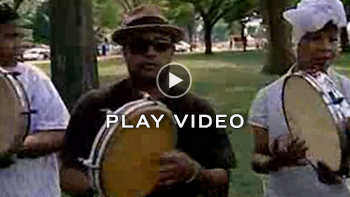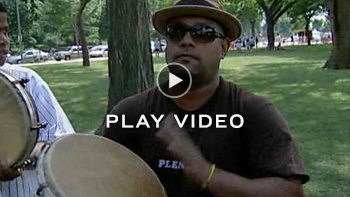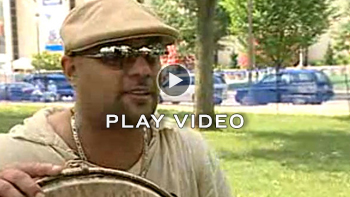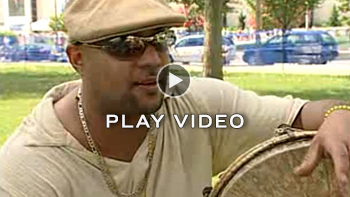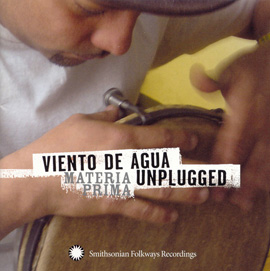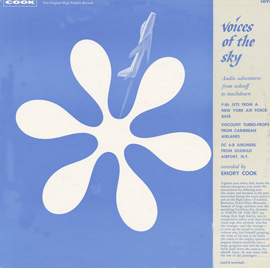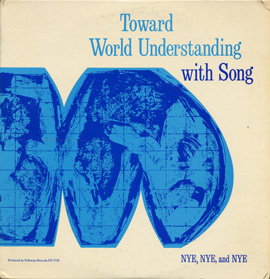Summary
Maps, music and video-recordings can be effectively used to discuss the present and historical incidence of the plena. In the way that rap music is referred to as ‘the people’s CNN’, plena, an Afro-Puerto Rican musical form that has much in common with other Caribbean musical expressions, is sometimes referred to as “the newspaper of the people” as it expresses what is going on in the lives of working class people.
Suggested Grade Levels: 9-12
Country: Puerto Rico
Region: Caribbean
Culture Group: Puerto Rican, Caribbean, Caribbean American
Genre: plena
Instruments: Plena drum (pandareta), güiro, güiro pick (pua)
Language: Spanish
Co-Curricular Areas: Social Studies, Humanities, Language Arts, Spanish
National Standards: 4, 6, 8, 9
Prerequisites: Students will do well to know the following vocabulary terms: verse, refrain, chorus, stanza, stigmatized.
Objectives:
- Students will listen to and begin to analyze music.
- Students will understand music in relation to history and culture.
- Students will describe the music that they hear.
- Students will learn about the history and purpose of plena, and about contemporary pleneros, or plena musicians.
Material:
- Pictures of pandereta and güiro,
- Pandereta and güiro
- Map of Puerto Rico, Map of the Caribbean
- “Ahora Sí” by Viento De Agua Unplugged on Materia Prima SFW40513_101-DT.
- Liner notes Viento De Agua Unplugged: Materia Prima (SFW CD 40513)
- “El León” by Viento De Agua Unplugged on Materia Prima SFW40513_102-DT.
- Artist Spotlight: Tito Matos of Viento de Agua
- Artist Spotlight: Los Pleneros de 21 (Afro-Puerto Rican tradition)
- Information about Plena in the section on rhythm
- Soundscapes from Smithsonian Folkways
- Videos from Smithsonian Folkways
“Carmelina” performed by Pleneros de 21
“Drums in the Plena”
“Puerto Rican Community”
“Musical Traditions” - “Plena”
- Folksongs of Puerto Rico (FW04412)
Liner notes on Plena - Flores, Juan. From Bomba to Hip-hop: Puerto Rican Culture and Latino Identity. New York: Columbia University Press, 2000.
- Moore, Robin. Music in the Hispanic Caribbean: Experiencing Music,Expressing culture. New York: Oxford University Press, 2010.
- Menkart, Deborah(ed.). Caribbean Connections: Puerto Rico. Washington, D.C.: Network of Educators of the Americas, 1992.
- ***Strongly encouraged—if available— is the documentary film “Plena is work, Plena is song”.
Lesson Segments:
- Introduction to Plena (1, 6, 7)
- Plena: History and Tradition (6, 7, 9)
- Creating and Sharing Plenas for Social Justice (1, 2, 4, 9)
1. Introduction to Plena
- Attentive Listening: Students will listen to “Ahora sí”, a recording by Viento de Agua Unplugged.
“Ahora Sí” by Viento De Agua Unplugged on Materia Prima SFW40513_101-DT.
Liner notes Viento De Agua Unplugged: Materia Prima (SFW CD 40513)
First listening before song begins can be guided by the question. What instruments do you hear? (Drums and guiro.) - Attentive Listening: Second listening with singing: Where do you think this music is from? (The Caribbean, Puerto Rico.)
- Integrating World Music: Teacher shows pictures of a plena drum (pandareta), güiro, güiro pick. The guiro is from Puerto Rico’s native or indigenous heritage and the drums come from Puerto Rico’s African heritage.

- Integrating World Music: Teacher shows maps of Puerto Rico and the Caribbean


- Integrating World Music: Teacher says and writes the name of the musical genre on the board: “plena” (pronounce as ‘play-nah’)
- Engaged Listening: Students will listen to “Ahora sí”, another time while clapping their hands or tapping the table.
- Integrating World Music: Teacher asks what the plena musicians or pleneros are singing about. Here is the refrain:
Ahora sí, yo te traigo plena.
Ahora sí, que yo venga a cantar
Ahora sí, mi güiro y su cadencia
Ahora sí, mi quinto a cantar(Quinto is a type of drum, a pandereta)
In English: All right now, I bring this plena
All right now, I come to sing
All right now, my [güiro] and its rhythm (Substitution of term güiro rather than rasp)
All right now, my drum will sing...
Share the liner notes from “Ahora sí” on the Viento de Agua
- Engaged Listening: Students will sing the refrain in Spanish with the teacher.
- Integrating World Music: Students and teachers discuss the refrain.
Assessment:
‘Quick write’ (Students are invited to write a ‘five - sentence exit ticket’): What is plena? Where does it come from? What are the instruments? Is there anything you notice about the form of the music? (Plena is an African - influenced musical form from Puerto Rico. Puerto Rico is in the Caribbean. Plena uses drums and guiros. The music is rhythmic. The lyrics are in Spanish. )
Extension (Optional): Connecting to students’ musicà hiphop culture
- Attentive Listening: What does this music remind you of? Why do you say this? (This music sounds like rap music or hip hop. Plena sounds like early or ‘old school’ rap music. People are not quite singing; it sounds almost as if they are rapping.)
- Integrating World Music: Teacher explains that in fact, this music is a foremother of hiphop. Discussion: Why do you think this is so? (The music provides a way for people to express what is going on in their lives and in their communities.)
- Integrating World Music: Research the history of Caribbean migration to New York City and musical contribution. In the early days of rap music in New York City, young people of Caribbean background played a significant role in hip hop’s formation. Why has the Puerto Rican influence in the roots of hip hop been overlooked? (Early rap music from the U.S. mainland tends to be associated with people of African descent who speak English, not Spanish. This is largely because music companies did not know exactly how to market this new urban popular musical, preferring to promote rap as solely an African American —rather than African - influenced— musical form. A good source for this topic is Juan Flores’ book From Bomba to Hip-hop: Puerto Rican Culture and Latino Identity.)
2. Plena: History and Tradition
- Integrating World Music: Review maps, instruments and concept and form of the plena.
- Attentive listening: Students will listen and watch the video of the Pleneros de 21 perform the plena “Carmelina”.
- Integrating World Music: Students will learn about the history of the plena. Students may read this as a handout.
(The following information for teachers and their students is adapted from Plena http://americanhistory.si.edu/.)
Plena is a twentieth century African Puerto Rican musical form that is both distinctively Caribbean and Puerto Rican. Plena is often called “newspaper,” because it talks about contemporary events, protest and struggle, scandals, elections, and other aspects of everyday life.
Plena instruments include three or more panderetas, handheld frame drums, of different sizes: seguidor, segundo, and requinto, each playing a different rhythm, and a güiro. With roots in West Africa, plena also reflects music from other Caribbean Islands and is now a source of national pride and cultural identity for Puerto Ricans.
After slavery was abolished in the Caribbean, the labor migration of freedmen, emancipated people, and other workers increased throughout the entire region. Puerto Rico was no exception; landless Puerto Ricans left the countryside to find jobs in the cities. People moved to Puerto Rico from English - speaking Caribbean islands such as Jamaica , St. Thomas, St. Kitts, and Barbados. A large number of these migrants of African descent joined Puerto Ricans of African descent in Ponce, a city in the south. Plena was born in the Ponce area’s working-class neighborhoods about 1898. Plena was a stigmatized musical form as a result of its class and African origins.
It was also at this time that the U.S. became Puerto Rico’s colonial ruler instead of Spain as a result of the War of 1898.
- Integrating World Music: Students discuss why it is that plena was stigmatized as a low status musical form and also why it is undergoing a resurgence today.
- Engaged listening: Students will watch the short videos from the Smithsonian Folkways: “Drums in the Plena”, “Puerto Rican Community, and “Musical Traditions”.
Students are encouraged to drum desks during music. While watching, students should jot down what is salient to them about the videos. Then students will discuss what they thought was important about the videos.
- Integrating World Music: Other instruments can be used along with these for plena. Why might the drums and the güiro be more common or popular than other instruments? (It is more that pandareta drums and guiros are small and easy to carry. People can also easily find items to use as percussive or rasp instruments.)
Assessment:
Write one paragraph about the purpose that plena serves for Puerto Ricans today.
- Integrating World Music/Engaged listening: Students will listen to “Ahora sí” again and remind themselves of the pattern of plena in the song. Students may clap and dance in seats. Students are encouraged to play with pandereta and guiro along with the recording.
- Attentive Listening: “El Leon” by Viento De Agua Unplugged on Materia Prima. SFW40513_102-DT
- Enactive: Students are encouraged to play with pandereta and guiro along with the recording.
- Integrating World Music: Students will note that the plenas looked at here have not been “newspapers” in the way that plenas have traditionally been used.
- Creating World Music: Students will create and perform their own plenas as newspapers.
Two students will receive a slip of paper with the same topic. Students with the same topic have thirty minutes to come up with a plena.
For each plena, students will need at least 4 stanzas (together) with a refrain or chorus.
Topics: Puerto Rico: Statehood/Commonwealth/Independence, the Tea Party, No Child Left Behind, Student activism here and in Egypt, Social Security, Gentrification, Mortgage/Economic crisis, Wall Street, War in Libya, War in Afghanistan, Healthcare/Social Security, Lack of representation for the people in Washington, D.C., Climate change, President Barack Obama, Former President George W. Bush, Democratic party, Republican Party, etc.
- Creating World Music: Students are encouraged to play with pandereta and guiro in inventing a rhythm that works well with the rhythmic recitation of the stanzas they have composed.
Assessment:
Students are required to write plenas and perform them. What makes these compositions plenas?



